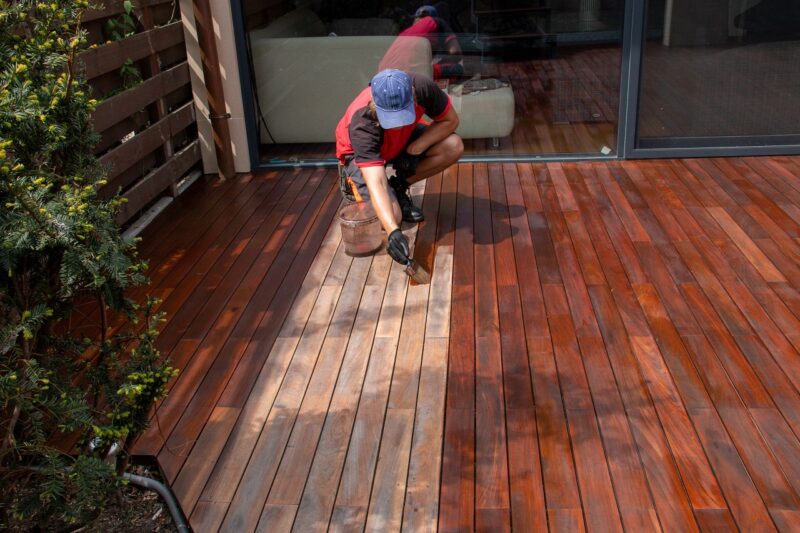Published: 22/01/25 By: Mike Bekin
Getting your timber decking ready for the rainy season? It is always smart to get ahead of bad weather, and prepping your timber for rain, snow and ice is a great way to boost its longevity. With that in mind, our team at EcoChoice have compiled a list of top tips to help you weatherproof your timber decking. Let’s dive in!
Always Clean Your Decking Before Maintenance
Before you start weatherproofing, your deck needs to be clear of any dirt, debris and mildew. We recommend using a stiff-bristled brush to sweep everything away and using a timber-safe cleaning solution to remove any dirt which is left behind.
For algae and mildew, mix together 1 litre of water with ⅓ cup of white vinegar and scrub the decking. You can also use a pressure washer on a low-pressure setting for an easier answer to the problem..
Repair Any Damaged Areas
Inspect your timber before weatherproofing for signs of damage. This can include:
- Splits and cracks
- Corroding or loose nails
- Loose boards
- Rotting boards
For issues such as corroding nails or splits in the timber, you might be able to fix the problem without removing the decking board. A small split, for example, can be fixed with a wood filler or epoxy resin. For issues such as rot or excessive damage, remove the affected boards and replace them with new, responsibly sourced timber decking.
Sand Your Timber (If Needed)
If your timber has any existing finish (e.g. a sealant or waterproof coating), you will need to sand it before you apply new finishes. This helps your weatherproofing treatments sink into the timber, making them more effective for the upcoming weather.
If you are working with untreated timber, do not worry about sanding your timber.
Use Oils to Replenish Your Timber
Oils are a fantastic way to protect your timber against the weather. A good oil can penetrate deep into the wood and restore the timber’s natural oil levels, preventing cracking and refreshing the look of your wood. It will also repel water so that it beads and runs off your timber, keeping your wood safe from rot during the rainy season.
Some oils provide protection against mould and fungus too, and will soak straight into your timber so you do not have to worry about slippery decking.
Apply Sealants and Timber Finishes
Unlike oils, sealants and stains sit closer to the surface of the timber. They create a protective barrier between the decking and the elements, keeping it safe from rain, sun and snow.
Of course, many of our top-end naturally durable tropical hardwoods do not require such treatments as they are already naturally durable to the elements (species such as Cumaru, Opepe, Jatoba, Yellow Balau). However, if you are sticking to a more budget-friendly decking, these treatments can extend the life of your timber.
If you are applying a sealant or finish, make sure to follow the manufacturer’s instructions. We recommend waiting until a period of dry weather before getting to work, and only applying finishes when the temperature is above 10°C.
Keep Your Timber Decking in Great Shape
By weatherproofing your timber, your decking will stay stronger, look better and last longer – but it is just the start of your timber decking maintenance! To learn more and keep your boards looking their best, check out all our advice on the EcoChoice blog.
If you have any questions about weatherproofing your timber, feel free to get in touch with our team today.
Tags: timber decking, waterproofing
Categories: Insights
